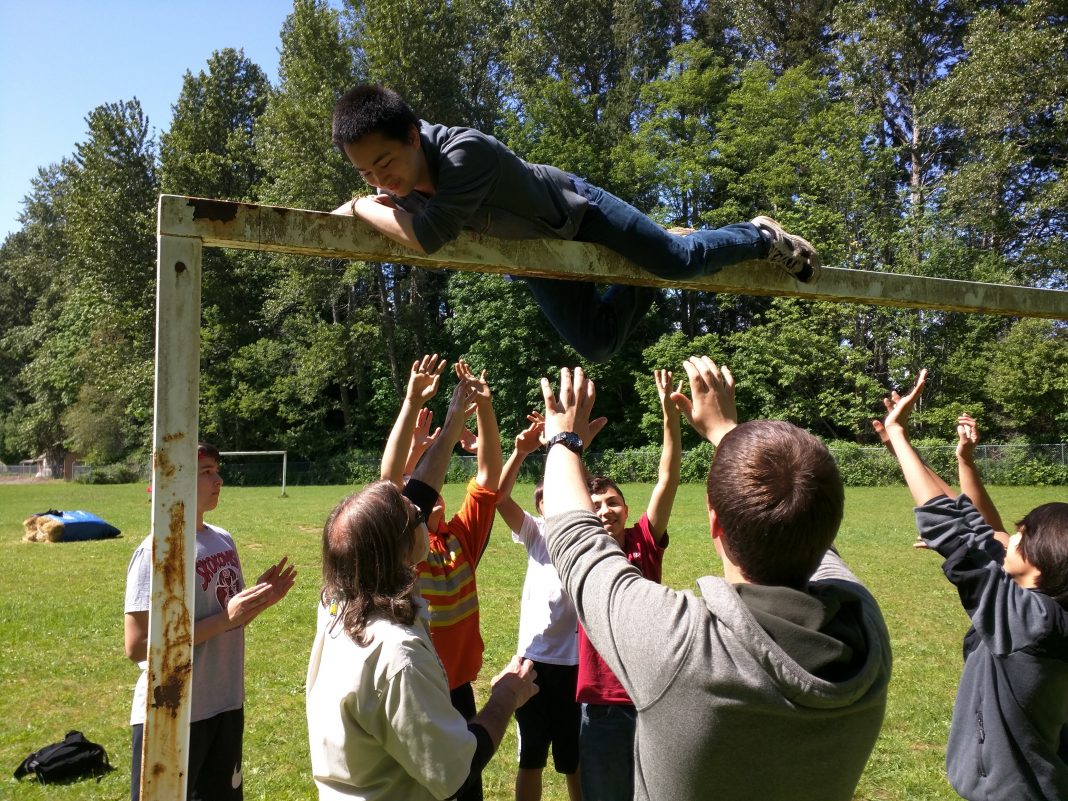Chambliss Keith, a K-8 teacher at Hood Canal Schools, is known for closing the books, locking the classroom door and heading for the woods with a group of students straggling behind him.
 The young people, members of the Skokomish Indian Tribe, begin the journey grumbling about the weight of their packs and the inclement weather. When the students return home though, they will walk as a group, heads held high, laughing and helping each other over rough spots in the terrain. They will be graduates of BOOTS, an experiential learning program. The name of the program signifies putting feet on the ground and moving forward—it stands for Bringing Outdoor and Occupational Technologies to Students.
The young people, members of the Skokomish Indian Tribe, begin the journey grumbling about the weight of their packs and the inclement weather. When the students return home though, they will walk as a group, heads held high, laughing and helping each other over rough spots in the terrain. They will be graduates of BOOTS, an experiential learning program. The name of the program signifies putting feet on the ground and moving forward—it stands for Bringing Outdoor and Occupational Technologies to Students.
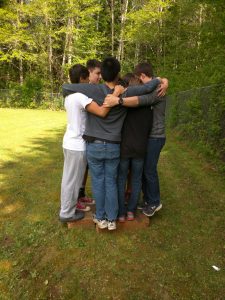
Keith, co-creator of the innovative program, stands aside and gives credit to his students for the program’s success.
The idea for BOOTS began in 1996 when Keith and fellow teacher Bert Miller realized that some of their eighth grade students were dropping out of school before attending Shelton High School. They had poor attendance, failing grades, and significant behavior problems.
“I knew we had to do something physical and challenging to get them interested in school. I was coaching basketball to kids who weren’t showing up for class but never missed a practice. Something was wrong there,” Keith comments.
Hundreds of kids have participated in BOOTS, a ten-week course offered every quarter, in the last 20 years. It involves outdoor time but indoor time too. The students write about their experiences and share how their lives are changed. The program is about breaking down barriers, overcoming fear, and learning to trust themselves and others.
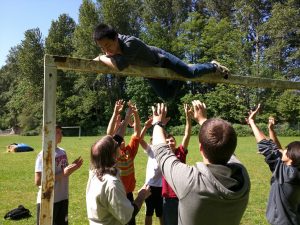
Keith has decades of experience working with struggling young people. After leaving his hometown of Selma, Alabama, he moved to Olympia and earned his degree at The Evergreen State College. He wandered the United States for a while, mainly working with young people facing obstacles. Outdoor education has always been his passion. One stint involved working with young boys from Chicago, St. Louis, and Detroit who were on their last chance with the legal system. On average, two of ten of those boys changed their lives because of the 42-day outdoor program—for Chambliss Keith those numbers weren’t high enough. Upon arriving at Hood Canal Schools 29 years ago, Keith was determined his students would make it.
BOOTS courses are made up of 10-12 students. Each group is either comprised of boys or girls. One activity is called “All Aboard.” The students are required to get all members on a 3-foot by 3-foot board. In order to accomplish the task, students have to grab each other and hold on tight. The goal is accomplished—with a lot of giggling by the end.
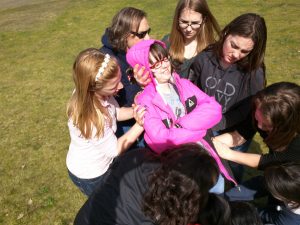
“Giant’s Finger” is one of the most challenging activities. A motorcycle tire sits at the top of a 15-foot pole. One class of girls worked for two hours and made dozens of failed attempts until they finally decided to trust their strength individually and as a group. Safety spotters stood close as two girls made the base. A third girl climbed onto their shoulders, and last, the smallest girl clambered up the backs and shoulders of her team and nudged the tire off the top. The whooping, hugging, and back slapping are traded with everyone—even between girls who had not been speaking just days before.
The students hike in the Olympic National Park, up Mount Ellinor and along a coastal trail ending at the Ozette Ranger Station. Many of the trust-building exercises take place at the Cispus Learning Center.
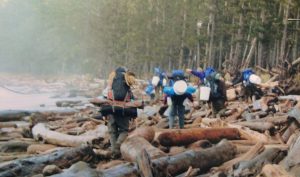
One young woman said, “In BOOTS I learned how to let myself trust different people. I don’t trust that easy so it was a whole learning experience that was challenging. I walked into BOOTS talking to only four of the eight people there. Now I talk to all of them and work with them.”
Keith knew the power of the outdoor experience, but part of the involvement in BOOTS was the requirement to work with people in the community. All students write a resume, attend mock interviews, and volunteer at the Squaxin Island Childhood Development Center. The Washington National Guard teach the students first aid, map and compass skills, and organize physical fitness tests. Members of the legal community—a superior court judge, defense attorneys, and corrections officers—meet with the students and talk about consequences of actions. Students also attend drug and gang awareness programs.
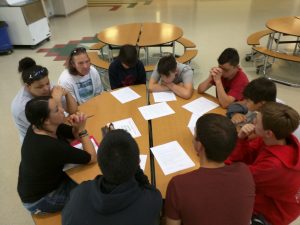
But, the success of BOOTS is ultimately found in the change in student lives. Keith waits and watches to see if the experiential learning experience has made a difference. If attendance becomes regular, grades go up, and disruptive behavior goes down, BOOTS has worked.
“The true test of success is found in the written student reflections,” according to Keith. “The most important thing students say they learned from the BOOTS program was how to work with others, especially students they did not like or did not know.”
“I am most satisfied when the kids learn to get along with one another,” says Keith. “That is the most important skill to have in life. Most important,” he stressed.
For Chambliss Keith, learning is intensively relevant for students at the Hood Canal Schools. This upcoming school year, Keith is stepping out of the classroom and moving full time into BOOTS planning and implementation. He received almost $100,000 in a grant with the state’s Recreation and Conservation Office and the school district. He is itching to develop more outdoor trust activities, but more importantly, he has his eye on the kids—and the triumph they will experience.









































